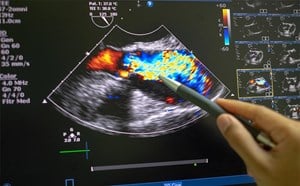
International Ultrasound Subcommittee Cases
Check out some cases and Journal Club articles from the International Ultrasound Subcommittee of the Emergency Ultrasound Section:
Journal Watch March 2012
Int J Emerg Med. 2011 Dec 7;4:72.
Review article: Use of ultrasound in the developing world.
Sippel S, Muruganandan K, Levine A, Shah S.
ABSTRACT: As portability and durability improve, bedside, clinician-performed ultrasound is seeing increasing use in rural, underdeveloped parts of the world. Physicians, nurses and medical officers have demonstrated the ability to perform and interpret a large variety of ultrasound exams, and a growing body of literature supports the use of point-of-care ultrasound in developing nations. We review, by region, the existing literature in support of ultrasound use in the developing world and training guidelines currently in use, and highlight indications for emergency ultrasound in the developing world. We suggest future directions for bedside ultrasound use and research to improve diagnostic capacity and patient care in the most remote areas of the globe.
Journal Watch September 2012
TWO NEW US Articles focused on HIV and TB that may be of interest to our group!
Am J Trop Med Hyg. 2010 Mar;82(3):512-5.
Short course for focused assessment with sonography for human immunodeficiency virus/tuberculosis: preliminary results in a rural setting in South Africa with high prevalence of human immunodeficiency virus and tuberculosis.
Heller T, Wallrauch C, Lessells RJ, Goblirsch S, Brunetti E.
Hlabisa Hospital, Hlabisa, KwaZulu-Natal, South Africa.
Abstract. In Africa, human immunodeficiency virus (HIV)–associated extrapulmonary tuberculosis (TB) is common and poses diagnostic difficulties. Ultrasound is useful to find suggestive signs such as effusions or abdominal lymphade-nopathy. Because trained radiologists are scarce in resource-poor settings, even this simple and relatively inexpensive diagnostic tool is frequently unavailable to patients in district hospitals in sub-Saharan Africa. We developed a focused protocol for assessment with sonography for HIV/TB and trained physicians in a rural district hospital in South Africa. In this pilot study, high levels of confidence in identifying specific signs were rapidly achieved and ultrasound was introduced into routine clinical practice.
Int J Infect Dis. 2010 Sep;14 Suppl 3:e108-12. Epub 2010 Apr2.
Abdominal tuberculosis: sonographic diagnosis and treatment response in HIV-positive adults in rural South Africa.
Heller T, Goblirsch S, Wallrauch C, Lessells R, Brunetti E.
Hlabisa Hospital, Hlabisa, KwaZulu-Natal, South Africa.
Methods: This was a prospective case series over 3 months of adult HIV-positive patients with symptoms suggestive of abdominal tuberculosis (TB). Diagnostic ultrasound was performed for all patients:sonographic criteria included abdominal lymph node enlargement (>1.5 cm) and focal splenic lesions; ascites was a supportive finding. Further diagnostic studies, e.g., aspiration or biopsy were not routinely performed. TB treatment was initiated on the basis of clinical and sonographic features. The patients were contacted after 4 months to evaluate the clinical outcome.
Results: One hundred and eighty adult HIV-positive patients were screened; 30 (16.7%) showed sonographic signs of abdominal TB. The median CD4 count was 78 cells/mm3. Presenting symptoms were weight loss(86.7%), abdominal pain (76.7%), and diarrhea (60%). Abdominal lymph node enlargement was the diagnostic finding in almost all cases (96.7%); hypoechoic lesions of the spleen were seen in 50% and ascites in 73.3%. Follow-up information was available for 25 patients: 24% had died and the remaining 76%reported symptomatic improvement and weight gain.
Conclusions: Characteristic sonographic features of abdominal TB are common in HIV-infected inpatients in a rural African setting. Ultrasound should be introduced into clinical algorithms for the diagnosis of extrapulmonary TB.



